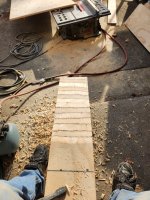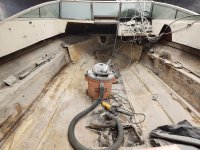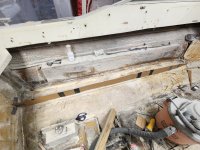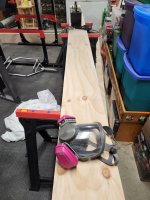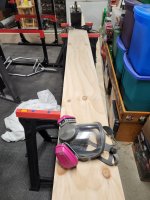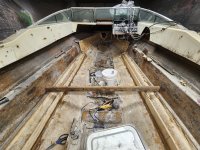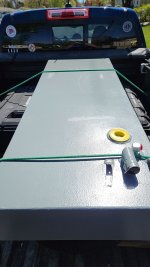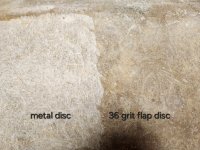Today I finally made the leap of faith... no more messing around, just rip it all out. I finally can say, I think I have crested the hump.
Some shots of my glassing of the outer stringers. These are rock solid.
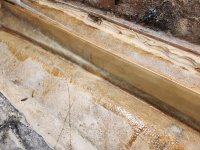
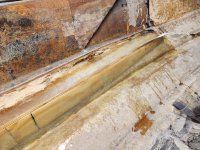
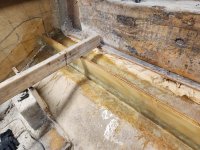
And a couple shots of everything removed.
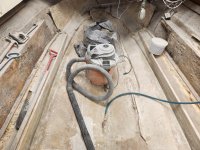
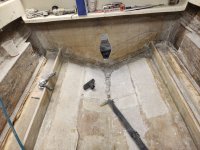
There was actually standing water under the false floor. The foam was like mud. I must have pulled 200lbs out of just that alone. This boat is going to fly lol.
A couple of book keeping things...
My transom is flat within 1/8 inch per mercruiser spec. I am 2.060 inches at the top and 2.180 at the thickest spot at the bottom. Spec is 2-2.25 inches far as I can find. Should I glass on another layer to be safe for the thinner spots or just leave it alone? I think I'll leave it personally...
Grinding, I've switched to this metal sanding disc. You can see on the floor it leaves a rough exposed finish. On the right side of the last picture you can see where I stopped and that transition is where I worked with a 36 grit flap disc. I think the present finish offers a better bond for layup compared to the flap disc as it's like laying up on exposed glass... better mechanical and chemical bond?
Also, for the back engine mounts. I originally did those with epoxy. I know there are some compatibility issues putting poly on epoxy. But if I ground through that tabbing to the glass underneath (you could see the color change and material change) would that mean I'm good to go there and shouldn't worry about bond?
And to further that question, there are some areas where the CSM is thicker than others. Most of the hull was ground to the roving layup but these thicker CSM areas that are clean and bonded well and flat... should I grind down to the roving or am I safe to lay up on that surface?






















